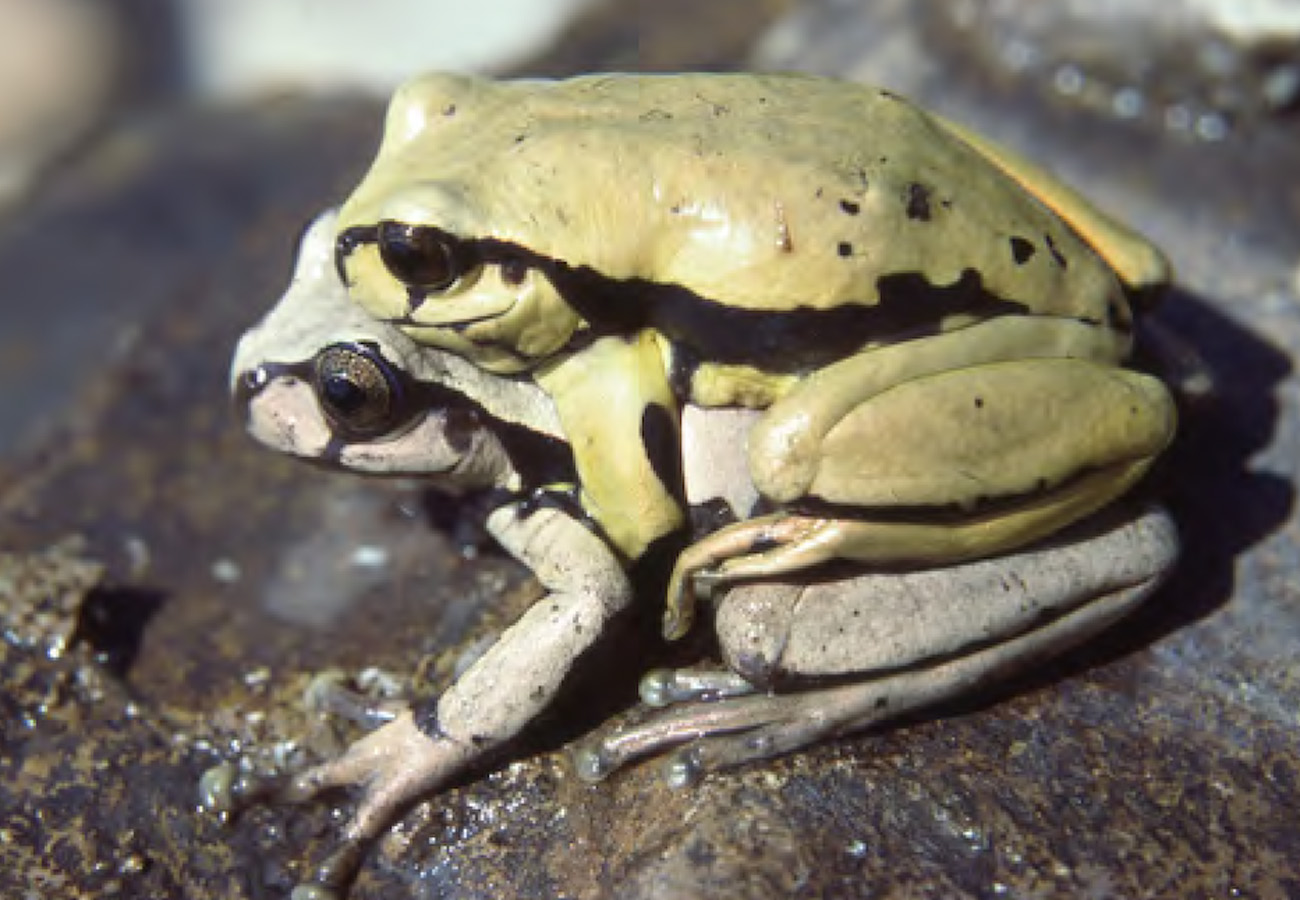Abstract
The Hirtodrosophila melanderi species group contains nine known species recorded from either the Old or the New World. All these species were thought to be strict fungivorous drosophilids. In the present study, we give supplementary descriptions for three of these known species, all recorded from Yunnan, southwestern China, H. furcapenis, H. furcapenisoides, and H. longifurcapenis, by examining respective type specimen(s). We then describe four new species of the same group, H. seticlasper Katoh & Gao, sp. nov., H. spinicerca Katoh & Gao, sp. nov., H. serratifurcapenis Katoh & Gao, sp. nov., and H. truncifurca Katoh & Gao, sp. nov., all discovered recently from high altitudes (ca. 3,500 to 3,800 m a.s.l.) in Tibet (Xizang), southwestern China. The delimitation of these new species is firstly performed in light of morphology and further with the aid of DNA sequences of the mitochondrial COI (cytochrome c oxydase, subunits I) gene. In addition, a key to all the species of the species group is provided.
References
Bächli, G., Vilela, C.R., Escher, S.A. & Saura, A. (2004) The Drosophilidae (Diptera) of Fennoscandia and Denmark. Fauna Entomologica Scandinavica. Vol. 39. Brill Leiden, Boston, 362 pp.
Buxton, P.A. (1960) British Diptera associated with fungi. III. Flies of all families reared from about 150 species of fungi. Entomologist's Monthly Magazine, 96, 61–94.
Coquillett, D.W. (1904) New North American Diptera. Proceedings of the Entomological Society of Washington, 6, 166–192.
Darriba, D., Taboada, G.L., Doallo, R. & Posada, D. (2012) jModelTest 2: more models, new heuristics and parallel computing. Nature Methods, 9, 772.
https://doi.org/10.1038/nmeth.2109DeSalle, R., Egan, M.G. & Siddall, M. (2005) The unholy trinity: taxonomy, species delimitation and DNA barcoding. Philosophical Transactions of the Royal Society B, 360 (1462), 1905–1916.
https://doi.org/10.1098/rstb.2005.1722Folmer, O., Black, M., Hoeh, W., Lutz, R. & Vrijenhoek, R. (1994) DNA primers for amplification of mitochondrial cytochrome c oxidase subunit I for diverse metazoan invertebrates. Molecular Marine Biology and Biotechnology, 3 (5), 294–299.
Guindon, S. & Gascuel, O. (2003) A simple, fast, and accurate algorithm to estimate large phylogenies by maximum likelihood. Systematic Biology, 52 (5), 696–704.
https://doi.org/10.1080/10635150390235520Gupta, J.P. & Singh, O.P. (1981) Two new and two known species of Drosophila from Rimbick, West Bengal, India. Entomon, 6 (1), 33–39.
Haliday, H.A. (1833) Catalogue of Diptera occurring about Hollywood in Downshire. Entomological Magazine, 1, 147–180.
Hsu, T.C. (1949) The external genital apparatus of male Drosophilidae in relation to systematics. University of Texas Publication, 4920, 80–142.
Kimura, M.T. (1979) Evolution of Food Preference in Drosophilidae: An Ecological Approach. PhD thesis, Hokkaido University, Hokkaido, 134 pp.
Kumar, S., Stecher, G. & Tamura, K. (2016) MEGA7: Molecular evolutionary genetics analysis version 7.0 for Bigger Datasets. Molecular Biology and Evolution, 33 (7), 1870−1874.
https://doi.org/10.1093/molbev/msw054Lacy, R.C. (1981) Taxonomic and distributional notes on some fungus-feeding North American Drosophila (Diptera, Drosophilidae). Entomological News, 92 (2), 59–63.
Lanave, C., Preparata, G., Saccone, C. & Serio, G. (1984) A new method for calculating evolutionary substitution rates. Journal of Molecular Evolution, 20 (1), 86–93.
https://doi.org/10.1007/BF02101990Li, K.Q., Wang, Y.Z., Dong, D.Z. & Zhang, L.K. (2015) Catalog of insect type specimens preserved at the Kunming Institute of Zoology, Chinese Academy of Science with corrections of some specimens. Zoological Research, 36, 263–284.
https://doi.org/10.13918/j.issn.2095-8137.2015.5.263Li, N.N., Toda, M.J., Fu, Z., Li, S.H. & Gao, J.J. (2014) Taxonomy of the Colocasiomyia gigantea species group (Diptera, Drosophilidae), with descriptions of four new species from Yunnan, China. ZooKeys, 406, 41–64.
https://doi.org/10.3897/zookeys.406.7176McAlpine, J.F. (1981) Morphology and terminology: adults. In: McAlpine, J.F., Peterson, B.V., Shewell, G.E., Teskey, H.J., Vockeroth, J.R. & Wood, D.M. (Eds.), Manual of Nearctic Diptera. Vol. 1. Biosystematics Research Institute, Ottawa, pp. 9–63.
Okada, T. (1956) Systematic Study of Drosophilidae and Allied Families of Japan. Gihodo, Tokyo, 183 pp.
Okada, T. & Carson, H.L. (1980) Drosophilidae associated with flowers in Papua New Guinea II. Alocasia (Araceae). Pacific Insects, 22, 217–236.
Rambaut, A., Suchard, M.A., Xie, D. & Drummond, A.J. (2014) Tracer. Version 1.6, Available from: http://tree.bio.ed.ac.uk/software/tracer/ (accessed 9 November 2017)
Ronquist, F., Teslenko, M., van der Mark, P., Ayres, D.L., Darling, A., Höhna, S., Larget, B., Liu, L., Suchard, M.A. & Huelsenbeck, J.P. (2012) MrBayes 3.2: Efficient Bayesian phylogenetic inference and model choice across a large model space. Systematic Biology, 61 (3), 539–542.
https://doi.org/10.1093/sysbio/sys029Schwarz, G. (1978) Estimating the Dimension of a Model. Annals of Statistics, 6 (2), 461–464.
https://doi.org/10.1214/aos/1176344136Sidorenko, V.S. (1995) New data on Asian drosophilid flies (Diptera, Drosophilidae). Part 1. Far Eastern Entomologist, 8, 1–4.
Sarkar, I.N., Thornton, J.W., Planet, P.J., Figurski, D.H., Schierwater, B. & DeSalle, R. (2002) An automated phylogenetic key for classifying homeoboxes. Molecular Phylogenetics and Evolution, 24 (3), 388–399.
https://doi.org/10.1016/S1055-7903(02)00259-2Tavaré, S. (1986) Some probabilistic and statistical problems in the analysis of DNA sequences. Lectures on Mathematics in the Life Sciences, 17, 57–86.
Throckmorton, L.H. (1975) The Phylogeny, ecology, and geography of Drosophila. In: King, R.C. (Ed.), Handbook of Genetics. Vol. 3. Plenum Publishing Corporation, New York, pp. 421–469.
Toda, M.J., Sidorenko, V.S., Watabe, H., Kholin, S.K. & Vinokurov, N.N. (1996) A revision of the Drosophilidae (Diptera) in East Siberia and Russian Far East: Taxonomy and biogeography. Zoological Science, 13, 455–477.
https://doi.org/10.2108/zsj.13.455Zhang, W.X. (1996) Drosophilidae. In: Xue, W.Q. & Zhao, J.M. (Eds.), Flies of China. Vol. 1. Liaoning Science & Technology Press, Shenyang, pp. 280–414.
Zhang, W.X. & Liang, X.C. (1995) Three new species of Drosophila (Drosophila) melanderi species-group in Hengduan mountains of China (Diptera: Drosophilidae). Acta Entomologica Sinica, 38 (4), 486–492.
Zhang, W.X. & Toda, M.J. (1992) A new species-subgroup of the Drosophila immigrans species-group (Diptera, Drosophi1idae), with description of two new species from China and revision of taxonomic terminology. Japanese Journal of Entomology, 60 (2), 839–850.

